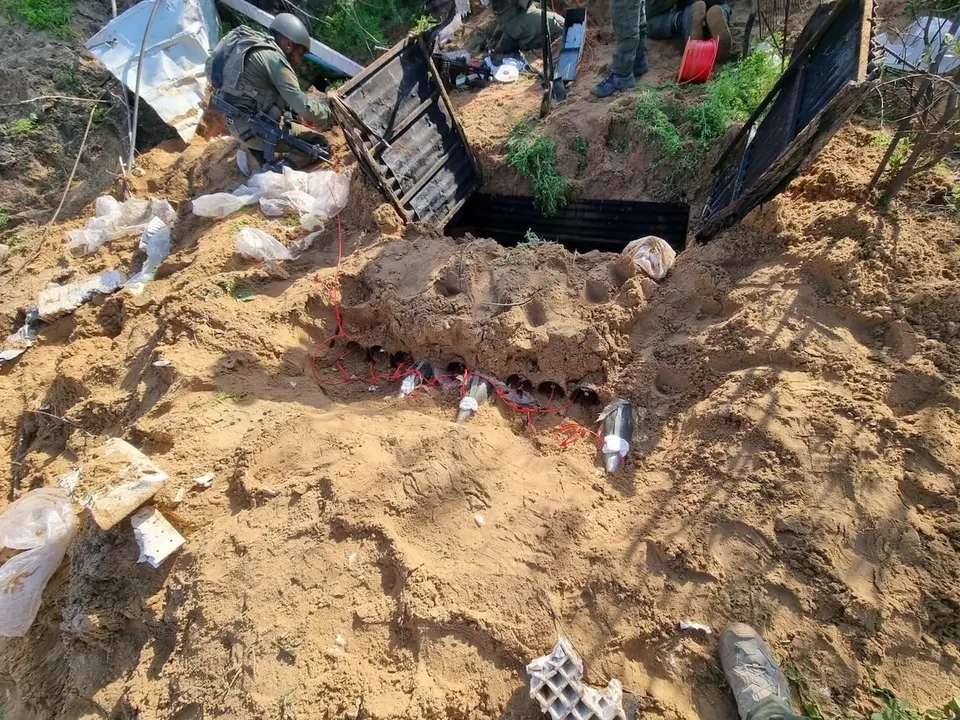Gaza, a place of death and despair

Three months have passed since the Hamas terrorist attack and thus the beginning of the war in the Gaza Strip. Hamas commandos killed 1,200 people, injured 3,300 and took 251 hostages with them. Along with the shock that shook Israeli society, the violence and cruelty of those murders, they sought - and found - the response that they had actually sought from Israel: its revenge and the corresponding invasion of Gaza, with the consequent atrocities, catastrophes and destruction that all war entails.
After these first three months, the Gaza Strip has largely been reduced to a vast sea of rubble. According to figures provided by the Gaza Ministry of Health, nearly 23,000 Palestinians have been killed and almost 60,000 injured, mostly as a result of systematic IDF bombardment.
Out of a motley population of 2.4 million Palestinians, 1.9 million have been displaced within the Gaza Strip itself, turned into a de facto mousetrap from which escape is virtually impossible.
"Gaza has simply become an uninhabitable place, a place of death and despair," as Martin Griffiths, UN Humanitarian Coordinator, put it.
The basic food and sanitary shortages irrevocably condemn a population reduced to misery to perish from hunger, dehydration or bombs.
For its part, Israel has dismantled almost the entire Hamas infrastructure in the north of the Strip, according to the IDF spokesman, Rear Admiral Daniel Hagari, who warned that, in the new phase of the war, this dismantling work will continue in the center and south of Gaza.
The IDF has discovered almost a thousand mouths of the extensive network of subway tunnels built by Hamas, many of them equipped with missile launching ramps camouflaged in civilian facilities such as schools, universities, hospitals or civilian offices.
In this account of the damage caused by these three months of war, we must not forget the worst of them all: the intensification of hatred between Jews and Palestinians, a feeling that makes it possible to predict the impossibility of a future coexistence of both communities if not separated by walls or well-defined borders.
The Israeli media deliberately omit to show images of the daily and systematic destruction of Gaza, which accentuates the perception that every Palestinian is an imminent and potential terrorist. In turn, Hamas has inoculated Gazans with a visceral hatred of Israel and Jews, a sentiment it is also trying to spread in a West Bank whose Palestinian population has precisely doubled its sympathy for Hamas, according to numerous surveys.
At this point, the extremist positions that are being put forward for the future of Gaza once the war is over are not surprising. Radical positions, such as those exhibited by ministers like Bezalel Smotrich or Itamar Ben Gvir, who advocate the total emptying of the Gaza Strip of Palestinians, planning in passing the temptation to end up doing the same in the West Bank, making the dream of Greater Israel a reality.
And there remains, of course, the danger of the Gaza war overflowing. A fire that both American and European diplomacy are trying to contain. Secretary of State Antony Blinken's latest tour of nine countries in the area is aimed precisely at preventing an escalation which, if it were to occur, would inevitably end up directly involving Iran, which could find in the war an escape route from its explosive internal social situation.
Following Blinken's lead, Josep Borrell was also trying to prevent Lebanon from becoming a theater of war. The head of European diplomacy went as far as the EU's dwindling influence could go by warning Israel, generically, that "a regional conflict is in no one's interest".
Tightening his clothes, especially after the slips of Sanchez and De Croo in their joint visit to Israel, Josep Borrell limited himself to suggesting to the Israelis that "there must be some other way of eradicating Hamas than by causing so many deaths".
In any case, the fact that the whole region is not yet literally in flames does not mean that we are not already paying the high price for the Gaza war. The change in the situation in the Ukrainian war or the increase in the cost of trade caused by the refusal of the major shipping companies to sail through the burning Red Sea are proof of this.

